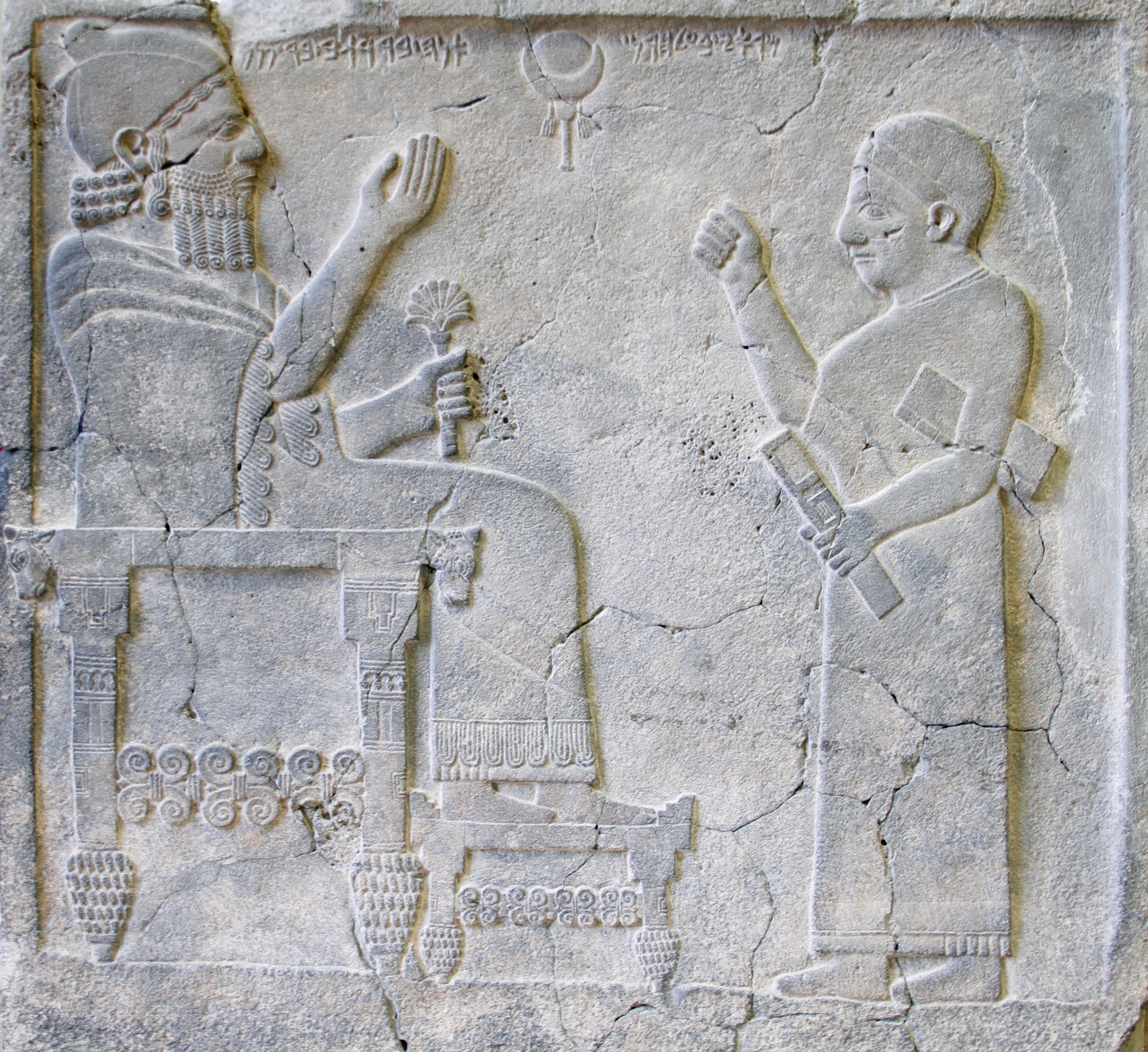
הֲדֹם hadōm – footstool
Semantic Fields:
Kingship
Author(s):
Alison Salvesen
First published: 2024-10-10
Citation: Alison Salvesen, הֲדֹם hadōm – footstool,
Semantics of Ancient Hebrew Database (sahd-online.com), 2024
Introduction
Grammatical Type: noun masc.
Occurrences: 6x HB (0/1/5); 0x Sir; 3x Qum; 0x inscr. (Total: 9).
- Nebiim: Isa 66:1;
- Ketubim: Pss 99:5; 110:1; 132:7; Lam 2:1; 1 Chron 28:2;
- Qumran: 4Q286 fr1.ii:1; 4Q403 fr1.ii:2; 11Q17 10:7.
Art and Archaeology
A.1 Tutankhamun’s throne (ca. 1350 BCE) has a footrest decorated with nine bound human figures representing the nine traditional enemies of Egypt, and symbolising conquest. The footstool is of solid wood veneered with ebony, ivory, faience, glass, and natural stone. The shape is that of the top, front and back of a low rectangular box, not closed at the sides or at the bottom. The footstool of Tutankhamun’s golden throne has six figures, and another footstool has two. There are also examples of Egyptian footstools apparently resting on the necks or backs of representations of enemies (Baker 1966:81, pl. 91; Metzger 1985:II, figures 272, 274).
A.2 In contrast, footstools of the 9th-7th centuries have four legs, and are truly stools. Often the legs terminate in pine or cedar cones, as chair and table legs from the region often do. There are stretchers, sometimes with scroll work. Sometimes there are projections to hold a cushion in place (Baker 1966:182 figure 291; 185 figure 297; 187 figures 299-300; 189 figure 302; 190-91 figures 304-5). Layard describes the remains of a throne and footstool at Nimrud: the footstool was of wood overlaid with embossed metal, decorated with the heads of rams or bulls. The feet had lion’s paws and pine cones (Baker 1966:188).
A.3 Syrian footstools of the 8th century were plainer, either solid with a little decoration, or with an arch beneath, e.g. the triple-staged footstool depicted on Ahiram’s sarcophagus (ANEP 157-58, #456, #458: Ahiram of Byblos). However, that of Bar-Rakib at Zincirli is Assyrian in style, with four feet, scroll work on the stretcher and pine-cone feet (Baker 1966:207-208, figures 336-339). See also ANEP 175, #515 (Hammurabi and Shamash); 176, #518 (Meli-Shipak and goddess); 207, #630, #631 (women, from Zincirli and Marash); 208, #635 (Agbar the priest from Nerab); and Laser (1968:55 figures 11, 12).

King Bar-Rakib with his secretary, Zincirli, ca. 730 BCE
https://commons.wikimedia.org/wiki/
A.4 Footstools were not luxury items in themselves. Lists from Alalakh demonstrate that they could be ordinary items of household furniture (Baker 1966:208), though Wyatt (1983:275) believes that even here they may have cultic connotations.
Conclusion
See also the entry כִּסֵּא, ‘throne’.
Although footrests undoubtedly existed all over the ancient Near East, the use of הֲדֹם in Ancient Hebrew is solely metaphorical, conveying the idea of obeisance and submission. It is symbolic of the conquest of one’s enemies on the one hand (Ps 110), and of the place where Yahweh is worshipped as sovereign on the other.
For this entry, see further Alison Salvesen, ‘הֲדֹם’, in: T. Muraoka (ed.), Semantics of Ancient Hebrew (AbrNSup, 6), Leuven: Peeters, 1998, 38-43 (Printed publications).
Bibliography
Hollis S. Baker, Furniture in the Ancient World: Origins and Evolution 3100-475 BC, London: The Connoisseur.
Siegfried Laser, ‘Hausrat’, Archaeologia Homerica, vol. P (eds. F. Matz and H.G. Buchholz), II:44-56, Göttingen: Vandenhoeck und Ruprecht.
Martin Metzger, Köningsthron unf Gottesthron: Thronformen und Throndarstellungen in Ägypten und im Vorderen Orient im dritten und zweiten Jahrtausend vor Christus und deren Bedeutung für das Verständnis von Aussagen über den Thron im Alten Testament (AOAT, 15), 2 vols., Butzon & Berger: Kevelaer; Neukirchen-Vluyn: Neukirchener.
Nicolas Wyatt, ‘The Stela of the Seated God from Ugarit’, UF 15:271-77.